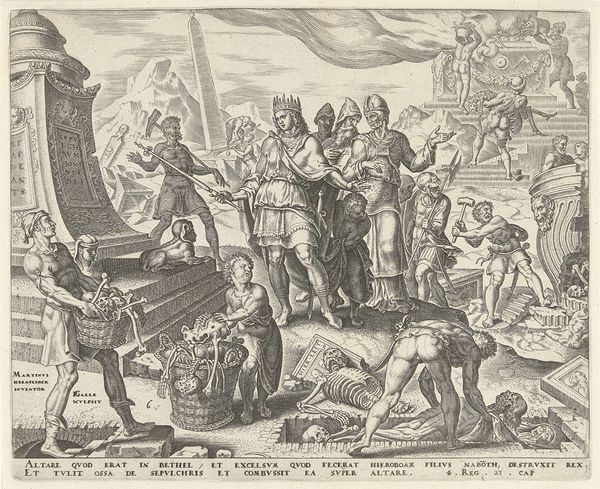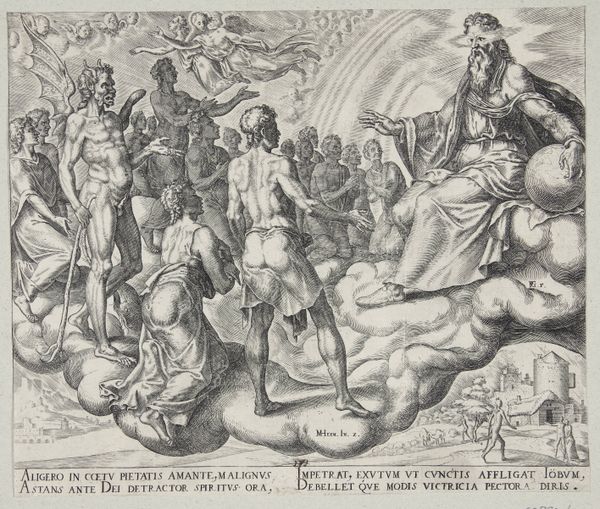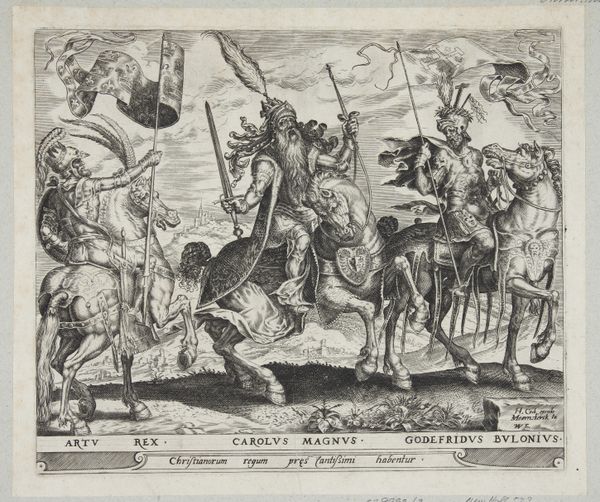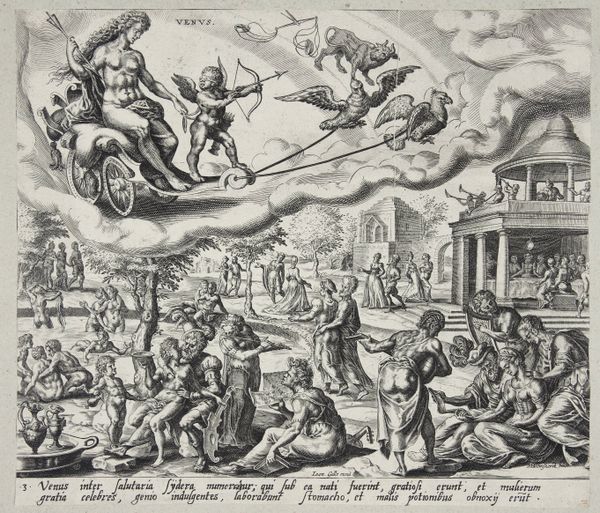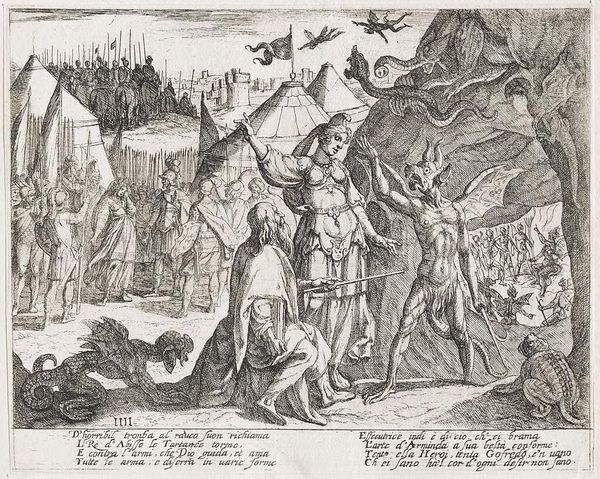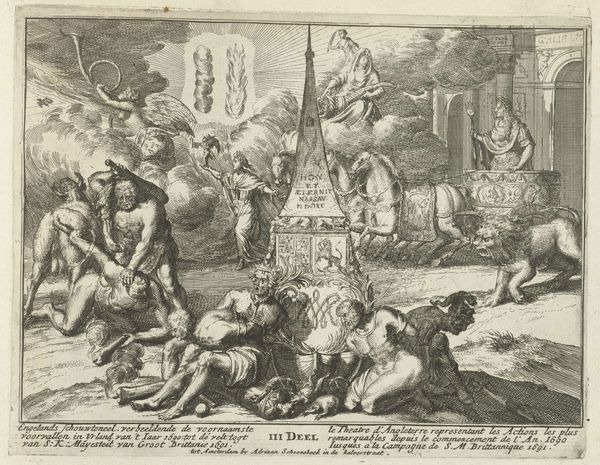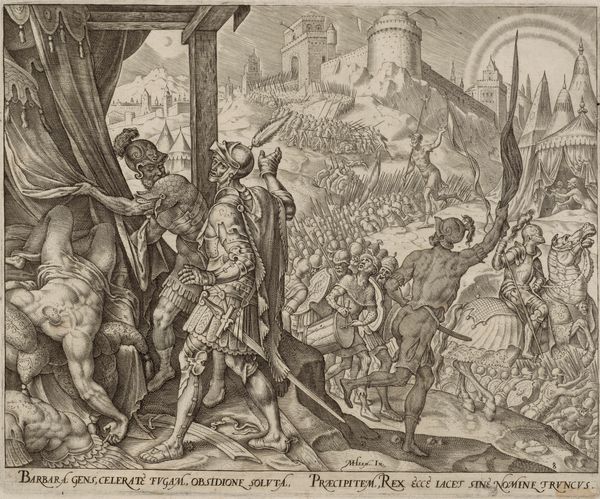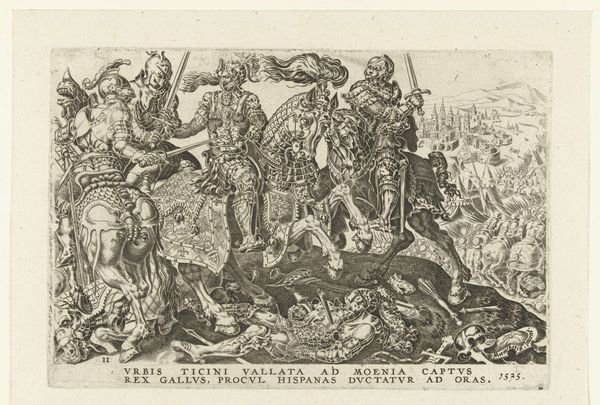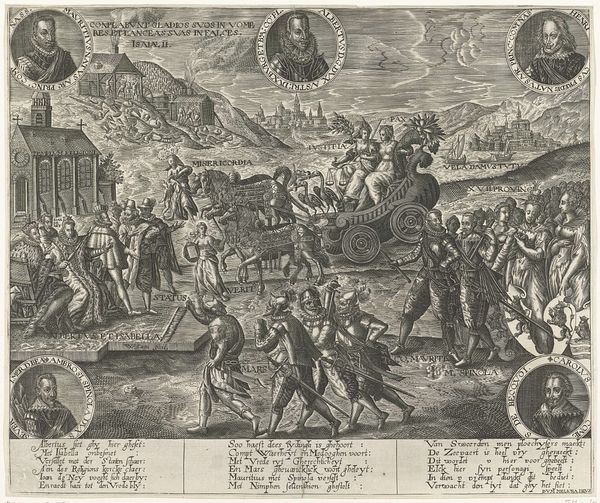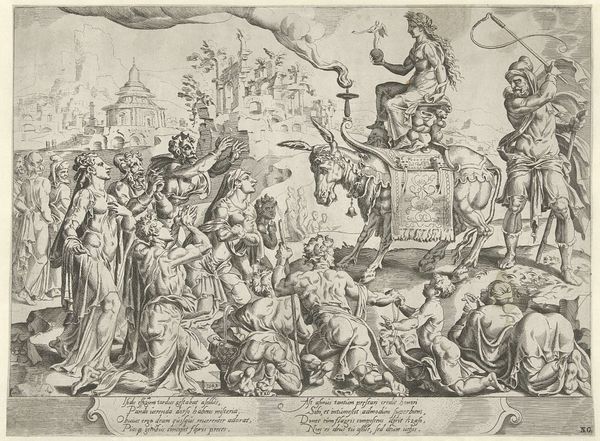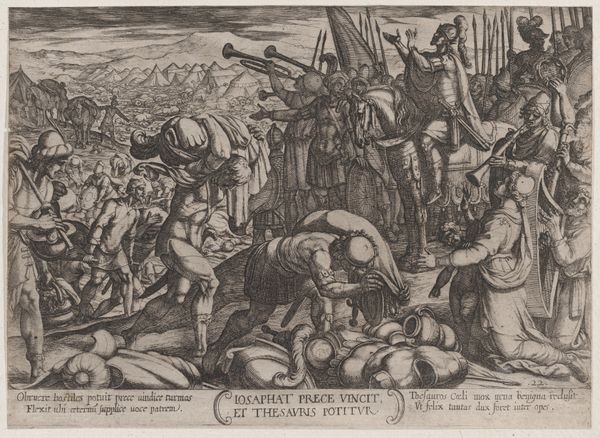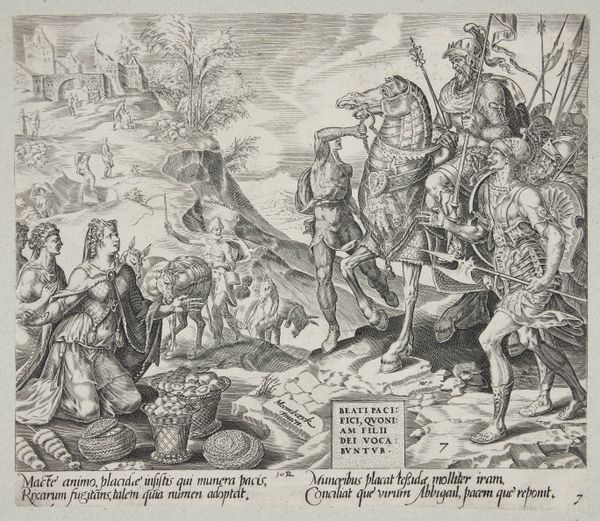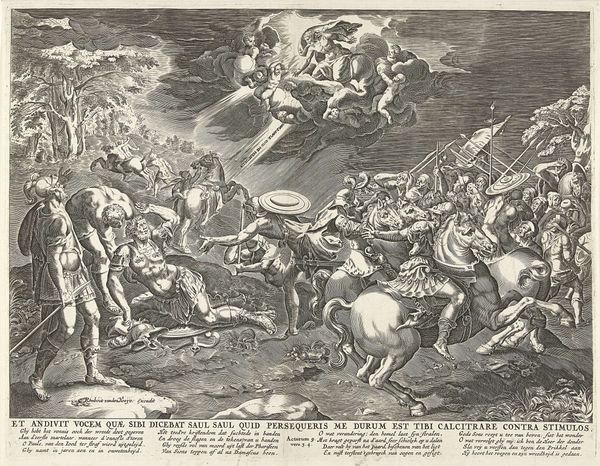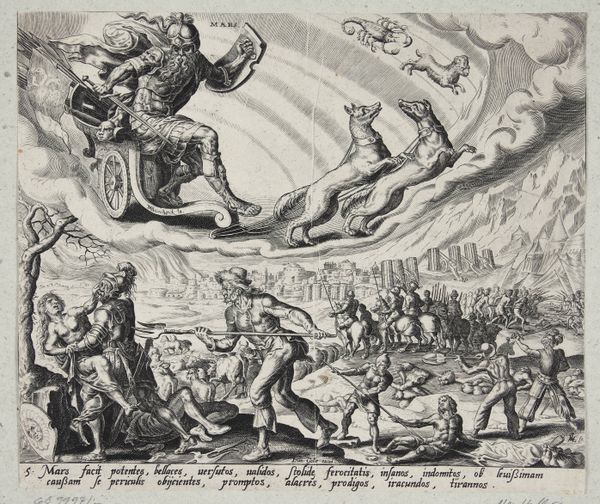
The destruction of the altar at Bethel and the exhumation of the bones from the sepulchres 1567 - 1570
0:00
0:00
print, engraving
#
narrative-art
# print
#
pen illustration
#
figuration
#
line
#
history-painting
#
northern-renaissance
#
engraving
Dimensions: 203 mm (height) x 249 mm (width) (bladmaal)
Curator: Looking at this densely packed engraving, "The Destruction of the Altar at Bethel and the Exhumation of Bones from Sepulchers," created between 1567 and 1570 by Philips Galle, I am immediately struck by the dynamism of its composition, but I’d be interested to know what you first perceive when observing this. Editor: Well, the sheer volume of bodies arranged in violent action jumps out. The skeletal remains coupled with such lively figures give it an intense contrast, like a memento mori in hyperdrive, almost theatrical. How would this engraving have resonated with audiences during its time? Curator: Galle created this work during the religious upheaval of the 16th century, amidst the tensions of the Reformation. The print illustrates a passage from the Old Testament’s Book of Kings, showcasing King Josiah’s efforts to purify Israel by destroying pagan altars and desecrating the tombs of false prophets. The act was powerfully symbolic. Editor: Yes, the lines practically vibrate with energy. Note the details in each figure: the king is standing proud while figures exhume the graves with such grim exertion, this work utilizes light and dark to its advantage. Curator: Exactly. Galle was part of a network of artists and publishers keenly interested in disseminating religious and political messages through print. Prints were a popular medium, because it had the ability to reach a broad audience during this period. By visually linking contemporary events to biblical narratives, Galle encouraged viewers to reflect on the present turmoil through the lens of scripture. Editor: Do you believe the artist meant to condone iconoclasm, by representing an almost frantic energy? The lines even become messier, looser, in areas showing destruction compared to the detail present around the figures who appear to be kings. Curator: It’s difficult to say definitively, but given the political climate, such scenes were frequently employed to inspire fervor and align actions with religious dictates. The choice of this event in particular invites reflection on what was regarded at the time as moral behavior. Editor: Fascinating. From a purely visual standpoint, the engraving certainly leaves a lasting impression through its robust composition and stark contrasts, it definitely reflects Northern Renaissance values. Curator: Indeed. Galle's print provides not only artistic value but insight into the historical forces that shaped societal viewpoints of his era, which helps modern museum attendees gain insights as well. Editor: Thank you, yes, it truly puts into perspective how even stylistic features are so easily shaped by sociopolitical undercurrents.
Comments
No comments
Be the first to comment and join the conversation on the ultimate creative platform.
